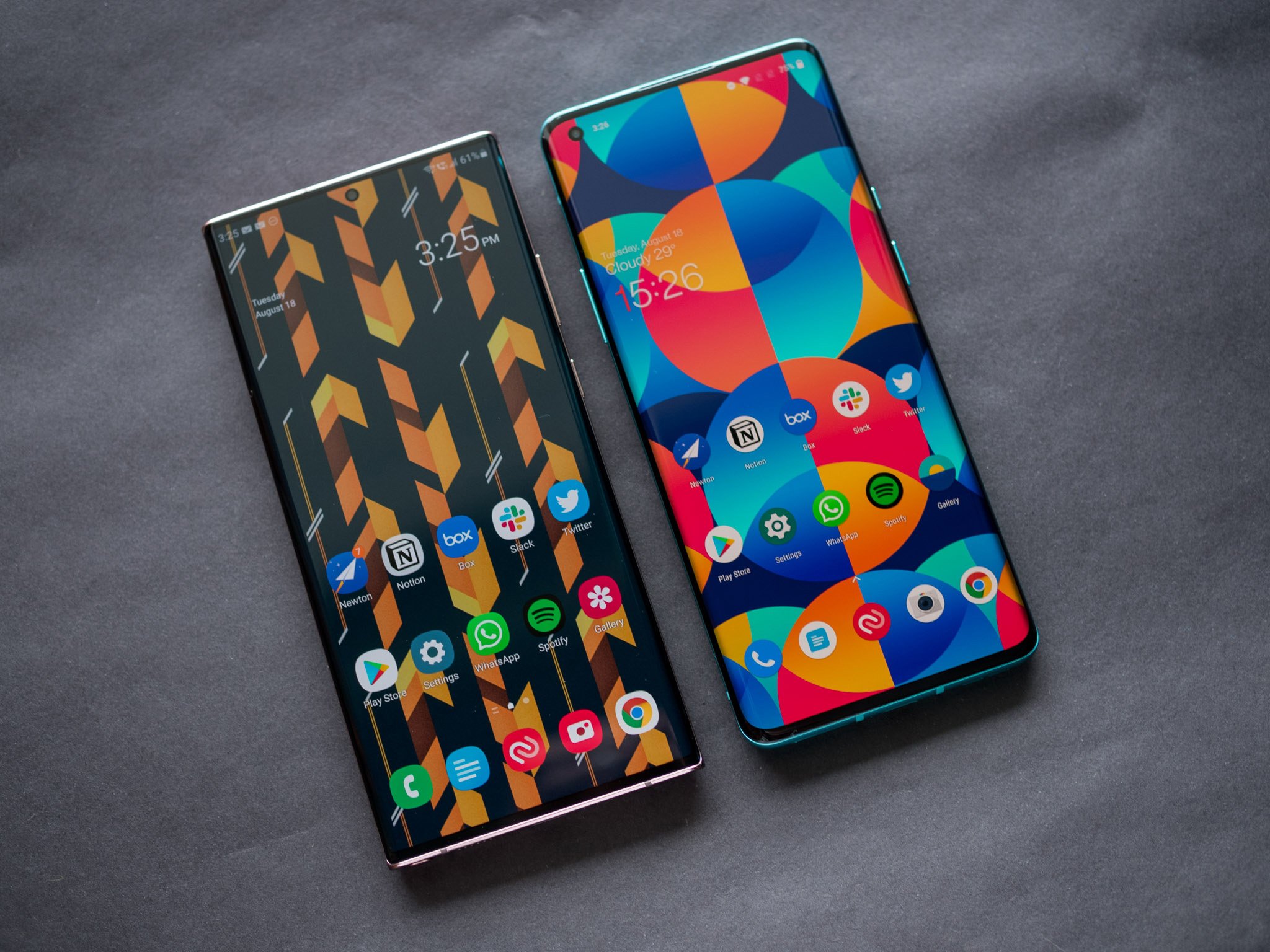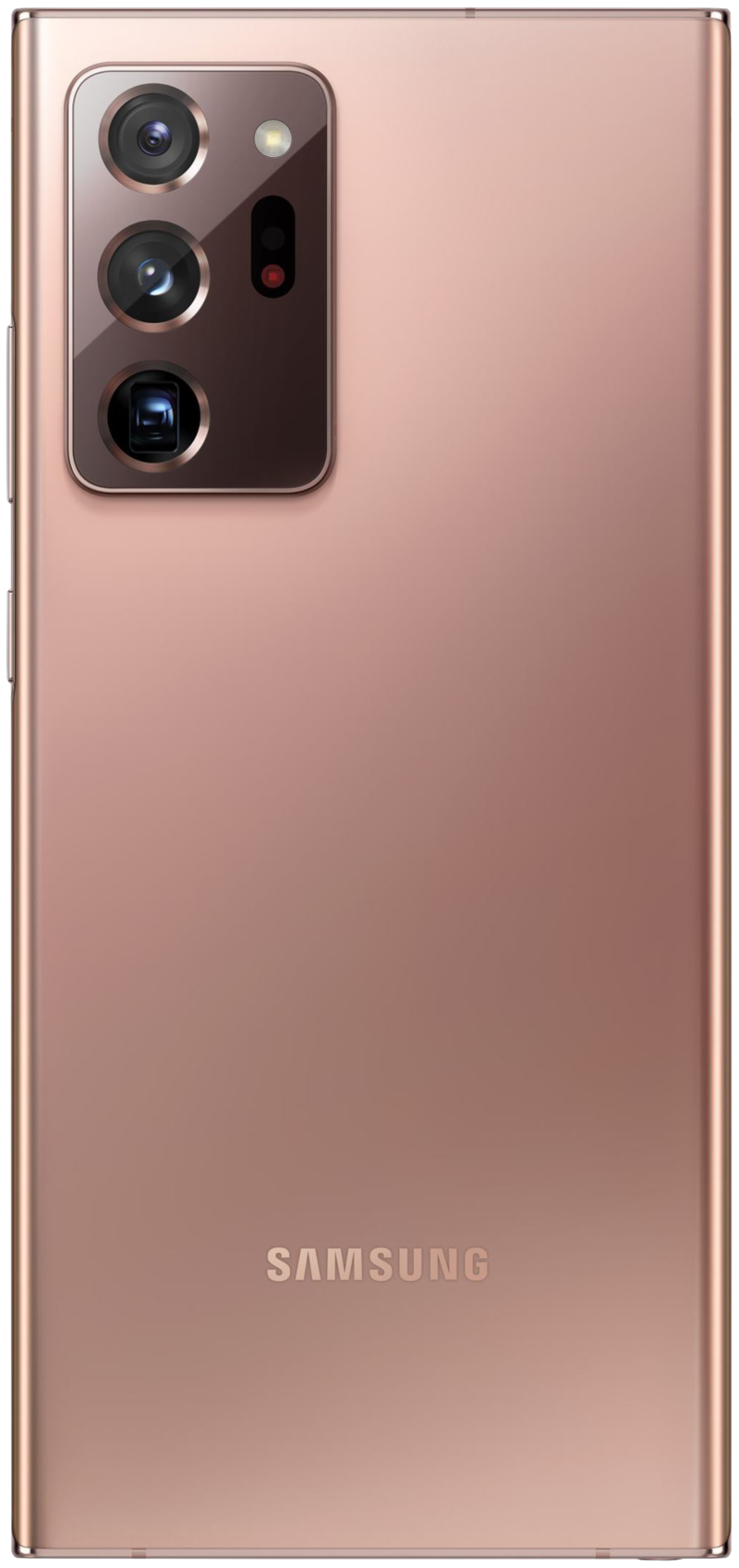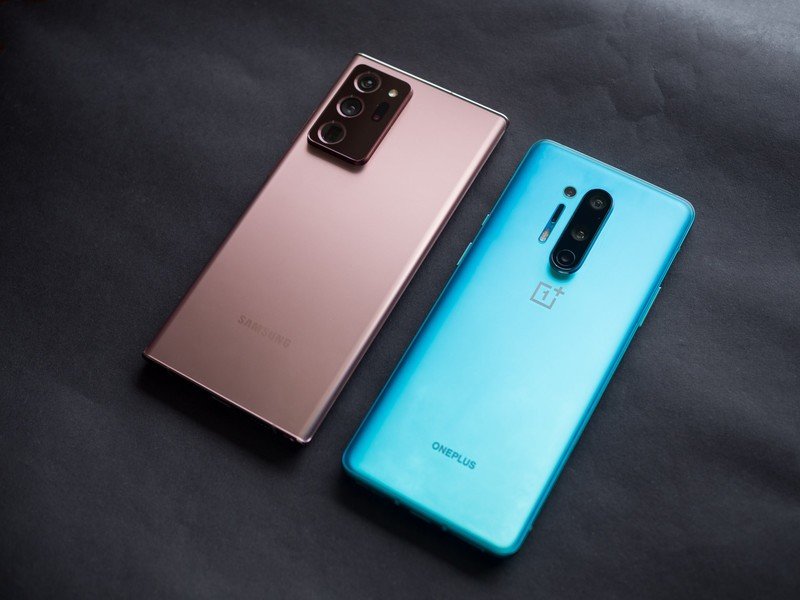Samsung Galaxy Note 20 Ultra vs. OnePlus 8 Pro: Which should you buy?

Samsung Galaxy Note 20 Ultra

The Galaxy Note 20 Ultra is Samsung at its best. It throws every feature imaginable into a massive, gorgeous phone with S Pen support and three powerful cameras.
Samsung Galaxy Note 20 Ultra
Best overall
OnePlus 8 Pro

The OnePlus 8 Pro is a tremendous flagship phone, with excellent cameras and software, and every hardware perk you could ask for at a much lower price than the Note 20 Ultra.
OnePlus 8 Pro
Better value
After months of nonstop leaks, the Galaxy Note 20 Ultra is finally official — but with a starting price of $1,300, it's a tall order for anyone but the most committed Note fan. Meanwhile, the OnePlus 8 Pro may be OnePlus's most expensive phone yet, but it's a comparative bargain, offering a strikingly similar spec sheet and lightning-fast performance for hundreds less. So for whom is the Note 20 Ultra's extra cost justified?
Samsung Galaxy Note 20 Ultra vs. OnePlus 8 Pro Two outrageously good phones
Perhaps one of the best design trends of 2020 is the widespread shift to matte frosted glass on flagship phones. The Galaxy Note 20 Ultra and OnePlus 8 Pro both feature matte backings that could almost be mistaken for anodized aluminum; they're soft and smooth to the touch, and do a much better job at hiding fingerprints than the glossy panels of the past. You also get striking color options on either phone. I'm personally partial to the Note 20 Ultra's new Mystic Bronze finish, along with the OnePlus 8 Pro's Glacial Green.
Both phones feature exemplary hardware that leaves virtually nothing to be desired.
You also get massive, top-of-the-line displays on each. The Note 20 Ultra's display is slightly larger at 6.9 inches, but both are incredibly bright and color-accurate, and feature 120Hz refresh rates — though the implementations of that 120Hz refresh rate differ. To preserve battery life, the Galaxy Note 20 Ultra forces you to choose between 120Hz and the WQHD+ resolution, knocking you down to 1080p if you choose the former.
Samsung has also implemented a dynamic refresh rate to the Note 20 Ultra, reducing the refresh rate down when the screen is idle; you likely won't miss 120Hz when you're simply staring at your lock screen. By contrast, the OnePlus 8 Pro allows you to operate at 120Hz at all times, even while running in full WQHD+ resolution.
While the general design language is similar on both phones, with the same combination of glass and metal materials, each phone bears a unique hardware differentiator. Of course, with the Note 20 Ultra, that's the S Pen, which has received a bevy of new software tweaks that allow you to operate the phone in more ways wirelessly. On the OnePlus 8 Pro, you get a physical switch above the power button that allows you to quickly change audio profiles, making it easy to mute your phone without taking it out of your pocket.
Get the latest news from Android Central, your trusted companion in the world of Android
Internally, the specs are fairly evenly matched. The Note 20 Ultra comes with a slightly newer Snapdragon 865+, offering approximately 10% more power than the 8 Pro's Snapdragon 865 (among other improvements), and features 12GB of RAM regardless of your storage configuration. It's also the only phone of the two with microSD expandability. Elsewhere, both phones are IP68 water- and dust-resistant, and feature ~4,500mAh batteries and wireless charging.
| Category | Galaxy Note 20 Ultra | OnePlus 8 Pro |
|---|---|---|
| Operating System | Android 10 | Android 10 |
| Display | 6.9 inches, 3088x1440 (496 ppi) resolution, Dynamic AMOLED 2X | 6.78 inches, 3168x1440 (513 ppi) resolution, Fluid AMOLED |
| Processor | Snapdragon 865+ | Snapdragon 865 |
| Graphics | Adreno 650 | Adreno 650 |
| Memory | 12GB | 8GB/12GB |
| Storage | 128GB/512GB | 128GB/256GB |
| Expandable Storage | Yes | No |
| Rear Camera | 108MP, ƒ/1.8, laser AF (wide-angle) 12MP, ƒ/3.0 (telephoto) 12MP, ƒ/2.2 (ultra-wide) | 48MP, ƒ/1.78, laser AF (wide-angle) 8MP, ƒ/2.44 (telephoto) 48MP, ƒ/2.2 (ultra-wide) 5MP, ƒ/2.4 (color filter) |
| Front Camera | 10MP, ƒ/2.2 | 16MP, ƒ/2.45 |
| Security | In-display ultrasonic fingerprint sensor | In-display fingerprint sensor |
| Battery | 4500mAh | 4510mAh |
| Water Resistance | IP68 | IP68 |
| Dimensions | 164.8 x 77.2 x 8.1mm | 165.3 x 74.3 x 8.5mm |
| Weight | 208g | 199g |

With mostly evenly matched hardware, a lot of this comparison comes down to software preferences. Samsung and OnePlus both make fantastic software interfaces built around Android 10, but each is a vastly different experience. If you're a fan of "stock" or Pixel-like software, you'll almost certainly prefer OnePlus's OxygenOS interface, offering a minimal take on Android with ultra-smooth performance and plenty of customizable options.
On the other hand, Samsung's One UI 2.5 is an equally great interface full of Samsung services and tweaks. There's a lot to love about One UI, but by far, my favorite feature is its overscroll ability in system menus, allowing you to pull the top options down to the center of the screen, making menus much more usable one-handed.
The Note 20 Ultra's cameras are very similar to the S20 Ultra's — and that's a good thing.
Of course, cameras are a major consideration when comparing high-end phones, as well. In our review of the OnePlus 8 Pro, we were pleasantly surprised by just how great the primary camera is, especially given the underwhelming results we've seen from the OnePlus 8 and many of the company's older devices. It has a standard arrangement of wide, ultra-wide, and telephoto sensors, along with a Color Filter sensor that enables some stylized effects for your photos.
But if you really want to go all out with your phone's cameras, the Note 20 Ultra's assortment of lenses will likely be more appealing. It features the same 108MP main sensor as the S20 Ultra we reviewed earlier this year, with a new laser autofocus system that should help tremendously with focusing. The telephoto sensor offers a native 5x perspective and allows you to zoom up to 50x with the help of digital zoom.
It's a bit difficult to recommend the Note 20 Ultra over the OnePlus 8 Pro from a value perspective; with a starting price $400 lower than the Note's, the 8 Pro offers a remarkably similar experience, with unbeatable performance, excellent cameras, and terrific software. That doesn't mean you should totally write off the Note 20 Ultra, though, and particularly if you enjoy the S Pen stylus or value its improved camera array, it's a compelling offering despite its astronomical price.

Hayato was a product reviewer and video editor for Android Central.

